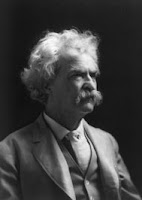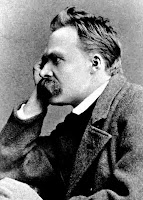How to make a Pochade Box - Serrett Box
It’s been a while since I posted any Pochade boxes, so I thought you might enjoy these stellar Serrett boxes by some very talented artists.
Mark Reeder, is a realist artist from Canada.
"I am devoted to Realism, depicting the subjects I choose to paint as I see them in nature."
Although Mark states that he is mainly a portrait/figure painter his landscapes and still lifes certainly do not take a back seat. His pieces "Still life with Apples" and
"Daffodils in the Studio" are top notch work. Well worth the visit to his blog, take some time and look through Mark Reeder's work and check out the Pochade box
he made here. Some great photos and hints on how he made his kit.
, a artist also from Canada describes himself as,
" Full time 3D animator / part time fine artist - instructor / full time Dad."
You'll find some interesting Classical portrait demos on his blog and a link to
his web site for more work.
Josef built a fine looking Serrett Box, see more about his pochade and art work at this link
Josef's Corner.
Jeremy Sams a North Carolina artist that voices his connection of faith and art.
"It is my goal as an artist to replicate the beauty of God's creation and capture the majesty of His handiwork through painting. He is the ultimate artist and it is my obligation and privilege to honor Him with my work."
He is a member of Charlotte Plein Air Painters and features the beautiful
Carolina country side in many of his plein airs. He made several innovations on the basic Serrett box, probably most interesting was the use of friction hinges. Jeremy provides several photos and instructions about his pochade
here on his blog.
Ron Guthrie - This is the second time I posted a kit by Ron on this site, he built a
beautiful box over a year ago and more recently built
another Serrett box for larger sized panels.
"The pochade box came out pretty cool. A lot bigger than the 9"x12" box but then again that box can't handle 11"x14" or 12"x16" panels. This bigger 12"x16" pochade can handle all of them from 12"x16 down. I could also do a vertical 16"x20" too although I've never attempted to do something that big plein air."
Ron Guthrie is a artist from Solvang California, is a member of The California Art Club, Oil Painters of America and involved with the Coast Guard Art Program. Ron's work is "clean", as I like to call it, others refer to it as honest, as of just speaking to the subject with the essentials, but I like clean, the very sincere efforts to express the image in front of him. He has a growing reputation, check out his work.
![]()
Again thanks to everyone who has been involved in the Serrett Box Pochade Box world take over. Your innovations, creativity and the generous sharing of your ideas will help open the doors of painting from life for artist everywhere. Keep building and painting.
And with that let me say that the rumors of my demise have been greatly exaggerated.
So here is my Serrett Box on the
trail at Kinkaid Lake.
A lot of life (good and bad) has gotten in the way of my posts here.
Explore - Question - Learn - Enjoy, Jim
![]()

















+Oil+on+canvas,+1915.jpg)







